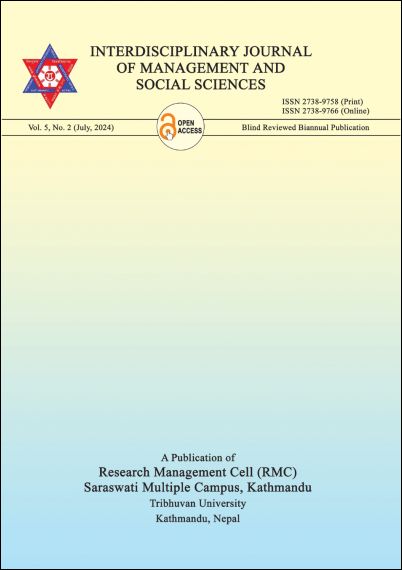Insights into Livestock-Induced CO2 Emissions: Nepal's Environmental Challenges
DOI:
https://doi.org/10.3126/ijmss.v5i2.69452Keywords:
Climate change, livestock production, ARDL model, CO2 emission, NepalAbstract
This study investigates cattle-related carbon dioxide emissions, their sources, and their effects on Nepal's environment. This research utilizes descriptive and analytical approaches in a quantitative manner to examine the complex connection between livestock populations and carbon dioxide (CO2) emissions in Nepal. A comprehensive analysis was conducted on the secondary data spanning from 1990 to 2020. Various statistical tests are employed to examine the existence of both short-term and long-term relationships between variables. The findings suggest that past CO2 emissions and the number of pigs has a significant impact on current CO2 emissions, while other factors do not appear to have a statistically significant effect. There is limited evidence available to establish a clear cause-and-effect connection between variables, except for the influence of poultry on cattle and goats, which subsequently impacts poultry. The model diagnostic confirms the suitability of the ARDL model, as stability tests indicate that the model's parameters remain consistent over time. This study explores the intricate relationship between livestock populations and CO2 emissions in Nepal, highlighting the importance of further research and policy interventions to promote sustainable environmental management.
Downloads
Downloads
Published
How to Cite
Issue
Section
License

This work is licensed under a Creative Commons Attribution-NonCommercial 4.0 International License.

